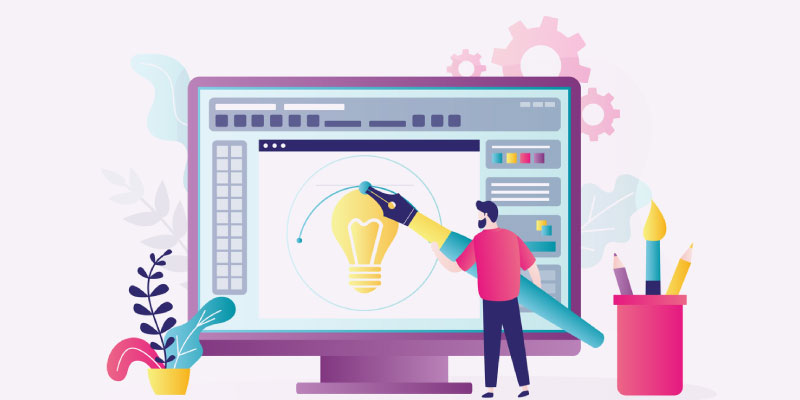10 Ways Coronavirus Changed The Lives Of Graphic Designers In 2020
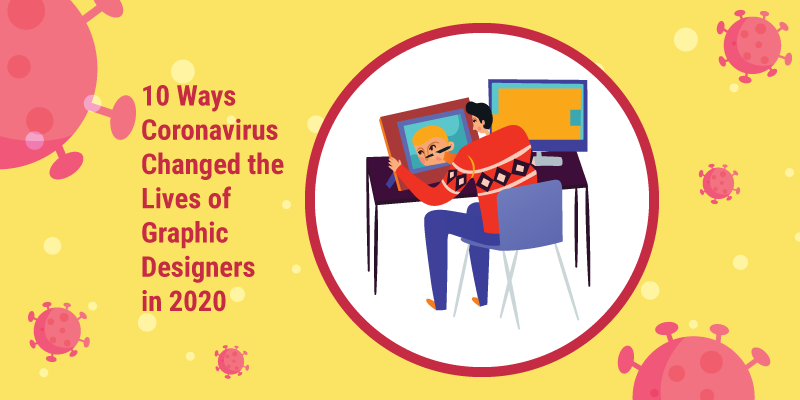
Featured Image: Freepik
As countries like Denmark, Germany, and Austria – among others – begin to ease their lockdowns, things are beginning to return to a semblance of ‘normal’ (whatever that used to mean). We use this opportunity to take a look at how the pandemic and then the ensuing lockdown affected and continues to do so, the work and personal lives of graphic designers.
1. Working From Home And Its Challenges
While a significant majority of graphic designers from around the world were already working from home as freelancers, there are those for whom this was an entirely new thing. Finding a place in your home where can you work diversion-free, investing in a stable internet connection, and then finding the discipline to actually work from home – it has been a struggle for many.
Going forward, as more and more businesses realize that remote working is doable and social distancing protocols still remain in place even after lockdown eases, WFH may become a permanent reality for some. In places where the lockdown restrictions are easing down, employers have asked their teams to come in shifts and groups so social distancing can still be practiced.
As WFH becomes a norm and people learn to overcome its challenges, many designers will need to find ways to work without a commute, in the presence of roommates or kids, or having to juggle work-life balance a bit more on the hourly.
Arts Company Logos
Hobby Logos
Audio Visual Logos
Media Service Logos
Marketing Firm Logo
2. Reinventing And Reimagining
This global pandemic has also been a time to rediscover and re-imagine. How can we do things differently? What we’ve been doing so far that can be improved? What new skills can we invest in and how can we reinvent ourselves? Collectively as well as personally, these questions have been on everybody’s mind.
David Alhadeff of The Future Perfect from New York talked to Sight Unseen and called this time ‘an opportunity’.
“A time to reconsider, re-plan, reinvent, strategize, audit, and restart. I wasn’t expecting it, but I’m doing a complete overhaul. I’m looking at everything. And that’s very inspiring. The impact has required direction attention to necessary changes in the way we are operating, but it’s also provided an opportunity to completely wipe the slate clean and ask, ‘what can I be doing differently and better than I’ve ever done before?’ It’s unprecedented, but that doesn’t mean it has to be all bad.”
With that positive take in mind, it is important to consider that in such uncertain times like this, it may not be easy for everyone to be able to emotionally or mentally invest in themselves enough so they’re able to rediscover unknown sides of them. Therefore, even if you haven’t been able to completely revamp your portfolio, whatever little or large you may have done to improve it is fine.
The important thing is to have a positive overview, keep creating, and keep growing. So that when we come on to the other side, we are stronger and ready to pitch in to help build a newer world.
3. Designing For Hope And Support
Graphic design has had a rich history of proactive contributions to global efforts of education, health, training, the spread of information, and community outreach. In times of global health pandemic, graphic design has especially outshone itself every time. From the Indian cholera symptoms of 1831 printed on to a broadsheet to the iconic Aids campaign of the late 20th century, graphic design has always helped create artwork that dispels misinformation, educates the masses, and communicates in a way that makes the consumption of information easy and effective.
For the current pandemic too, artists world-over have come together and designed artworks that educate, inform, and teach. From hand-washing to social distancing, and from teaching about the Covid-19 symptoms to humorously describe how people are handling quarantines, designers are doing their bit to send messages of help and support.
These messages contain a sense of humor and a reminder that we’re all in this together.
Do your part and stay home. It’s all we can do. pic.twitter.com/dLOkV3znNe
— juan delcan & valentina izaguirre (@juan_delcan) March 16, 2020
4. Graphic Design For Gaming Is At A Rise
While video games have always been popular, Covid-19 crisis has opened up new vistas for the growth and evolution of graphic design in the gaming industry. How? Well, it has to do with a whole lot of people turning towards gaming to ‘let the steam out’, reconnect with friends that they aren’t able to hang out with anymore, and in some ways be even more socially present for each other. Children, as well as adults, have admitted to using video games as a part of their regular quarantine routine.
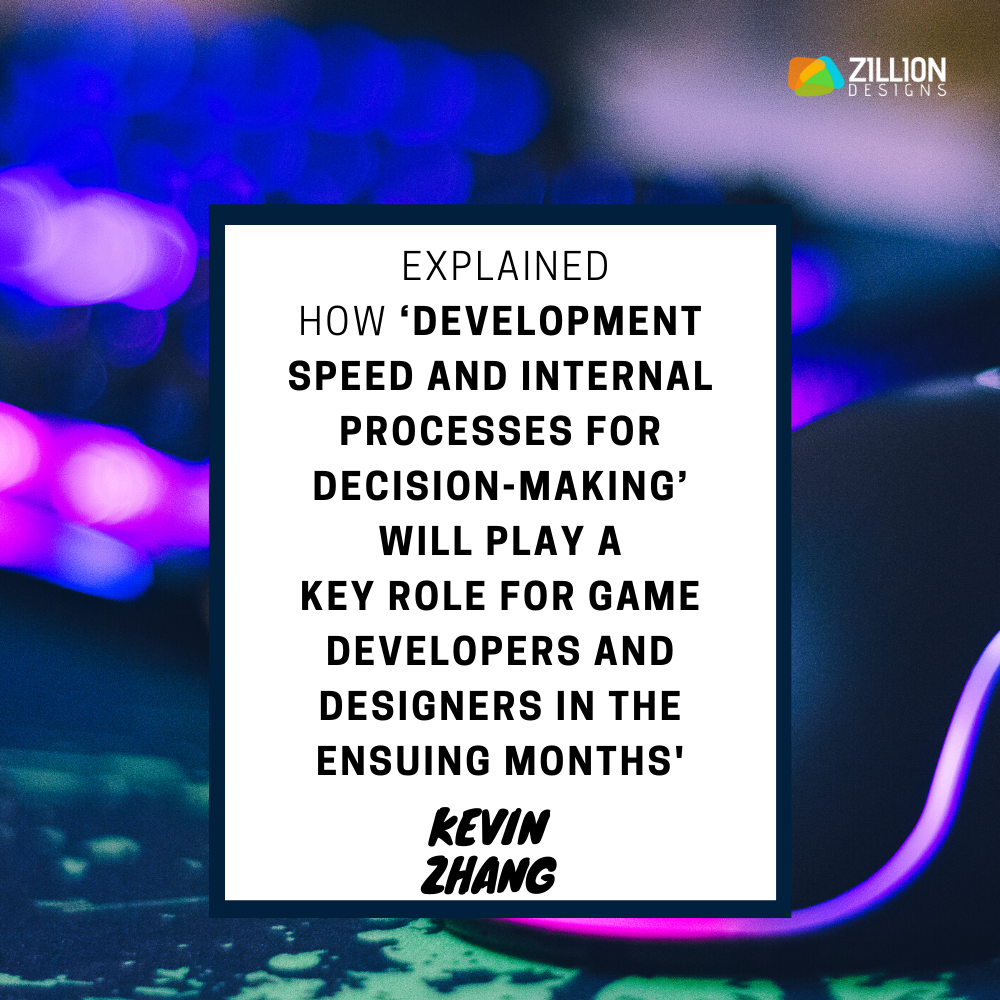
This surge in video game usage has been particularly visible in social-centric games – also called party games or social games – where different teams or players come together to take part in the same game. Tech Crunch recently talked to some of the big names of the gaming industry to learn about how the gaming industry as a whole will evolve in reaction to these responses.
An underlying theme in that discussion was the role quality graphic design will play in the production of these games. Kevin Zhang explained how ‘development speed and internal processes for decision-making’ will play a key role for game developers and designers in the ensuing months.
So if you have a passion for gaming and want to design for this world, this may be time for you to shine.
5. Behavior Changes Through Design
Another major change that we have witnessed during this lockdown in terms of how graphic design is responding to it has been its creative investment in behavior change efforts through design. From teaching people new ways to say hello without shaking hands or hugging to illustrating how to ‘flatten the curve’, these designs have it all.
Dr. Amy Bucher, a behavior change designer and author of Engaged: Designing for Behavior Change, says ‘understanding the principles of behavior change design can help us during this crisis – both in our professional and personal lives.’ These principles consist of consciously adding three important elements to every design piece we create for behavior change:
- A sense of autonomy. A sense of control on our own choices and the assurance that others are aware of what I need.
- A sense of competence. The knowledge that we can make a difference or that our behavior change sacrifice will bring a change.
- A sense of connectedness. How my behavior change relates to others and affects others and vice-versa. How is everyone else doing?
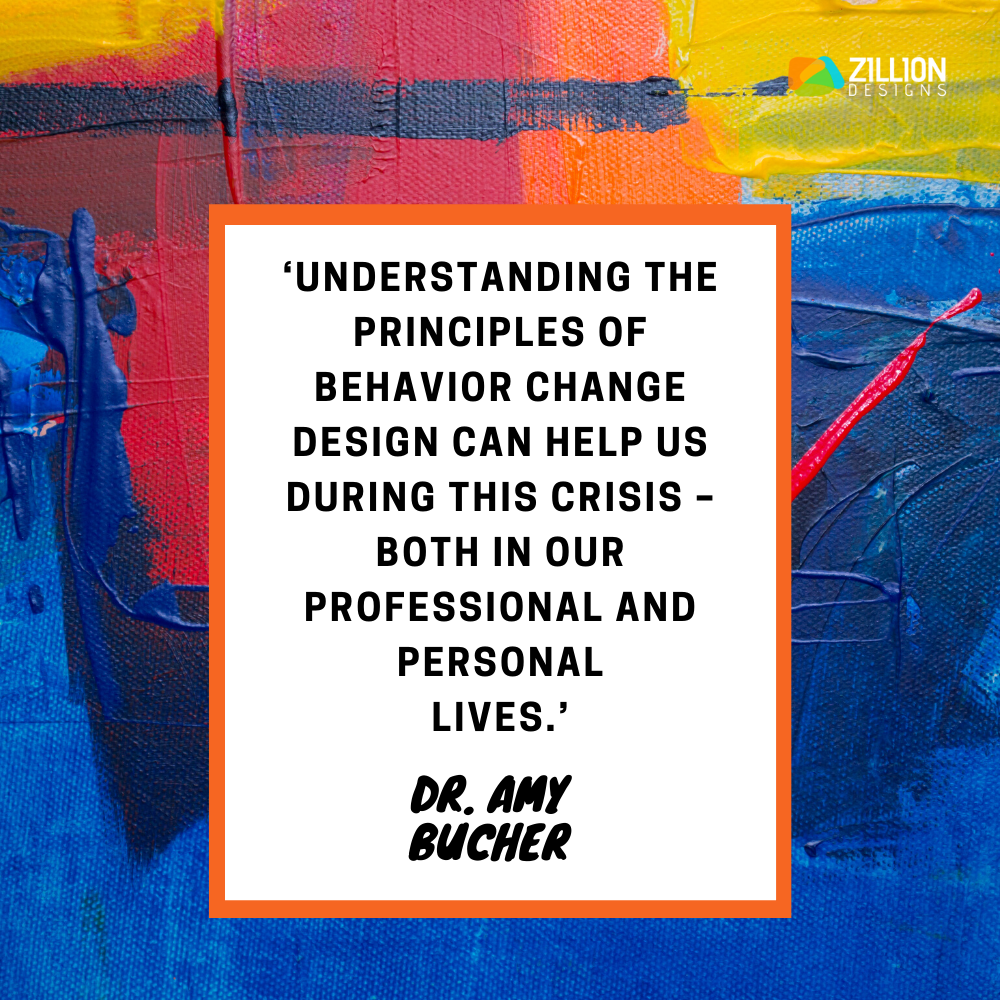
When we look at different artwork that has gained popularity for its behavior change efforts during this climate, we see that all of it fulfills all these three considerations in its execution. It gives people a sense of control, the assurance that what they are doing will have an effect, and most of all, a sense of community and relatedness.
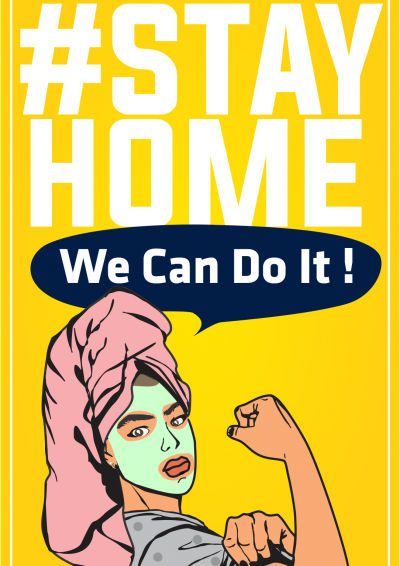
Image Source: Stay Sane Stay Safe
6. Lack Of Collaboration & Human Interaction
Creativity is about connectedness. We feel inspired by the people around us, the environment around us, or the stories or times that we’ve lived, listened to, or experienced any other way. This connectedness is fundamentally social. We require human interaction in order to be able to design pieces that will have relevance and that will resonate with others.
In a time like this, human interaction has been put on hold. This lack of collaboration has forced designers worldwide to find inspiration anywhere else. For design studios and freelancers who have been able to stay afloat in these tiring financial times, inspiration has been able to come somewhat easily. Being in touch with colleagues, having virtual platforms to be able to get client feedback, and Zoom meetings where a lot of collaboration can take place, have all meant that their creativity may continue, albeit at a slower pace.

For designers who have been let go or the freelancers who are having trouble finding new projects, the lack of work coupled with a lack of human interaction poses a whole new kind of challenge. Not only inspiration may be challenging to find, being unable to go out and let out steam may also put a damper on things.
As designers learn new ways to cope with these challenges, it is safe to say that in times ahead, a lot of us will perhaps come out more reliant on ourselves and more creative on how to continue creating despite all the roadblocks.
7. Virtual Reality May Become The New Work-Normal
Another way that the change is coming for graphic designers in the near future is in the form of VR programs that’ll replace any instances when we aren’t able to meet with colleagues, clients, and vendors for our design project.
As a graphic designer, if you have worked closely with Virtual Reality, this change may not be that challenging. But for others, who have had little to no experience with VR, you may be in for a ride. If you are a designer who runs their own studio or work in a large agency, the finances of investing in the new technology may be bearable.
For small- to medium-level designers who do not have flexible budgets, they’ll have a harder time competing with rivals who can invest in this technology and acquire clients who may want VR/AR capabilities for their business partners.
So while the technology may bear worthwhile benefits, the costs will not be easy for everyone to bear. And this adds another challenge on an already full plate of graphic designers. However, there are ways to navigate this.
There are government grants and packages that you can qualify for if your business has been affected by the pandemic. Hopefully, with one of these grants or loans, your budget deficiencies can be alleviated and you can be in a better position to compete with the big boys when things resume eventually.
8. Focus On Mental Health & Wellbeing
The government imposed self-isolation, social distancing rules, and having to remain cooped up inside for months on end, has taken a toll on everyone’s mental health. For graphic designers and other creative professionals, this has been a particularly difficult time.
Not having colleagues around with whom you can bounce off ideas, lack of inspiration due to a stagnant lifestyle, and a continued imposter-syndrome that many artists – new and experienced – deal with anyway, has not been easy. Therefore, this time has forced a lot of designers to focus on mental health regimens to make this time easier. Graphic designers have come together to create posters, designs, and infographics to talk about mental health and how to stay positive in these uncertain times.
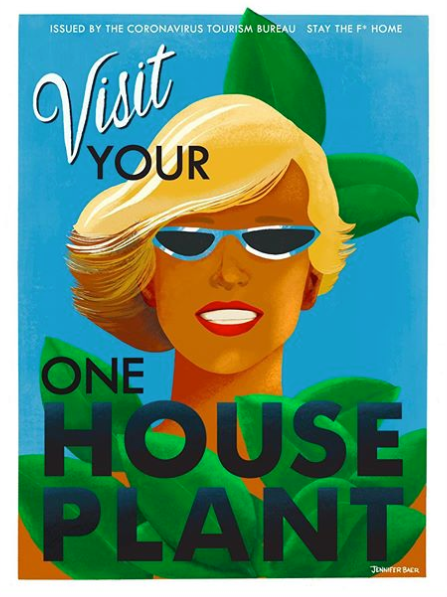
Image Source: Instagram
It’s safe to say that going forward, a focus on mental health is going to a permanent fixture of a designer’s life to ensure thorough wellbeing and continue growing as an artist.
9. Economic Meltdown And Its Effects On Design Careers
Coronavirus has already cost the US 20.5 million jobs as of April 2020. World over, every four out of five jobs have been hit by the pandemic. The graphic design industry is dependent on other industries to flourish. With so many of its potential client markets – restaurants, retail stores, and travel & leisure, etc. – so severely hit by the pandemic, it is no surprise that designers are also feeling the brunt of the circumstances. The situation could not have been easier for those who were just about to start their careers in design.
Talking to his students from his home office, Brian LaRossa, who started his graphic design career during the Great Recession of 2001, used his own experiences to instill a sense of resilience in his students. Talking to them and then describing the experience through a blog post at Eye on Design, he talked of resilience as being the thing that we need right now, and for the foreseeable future.
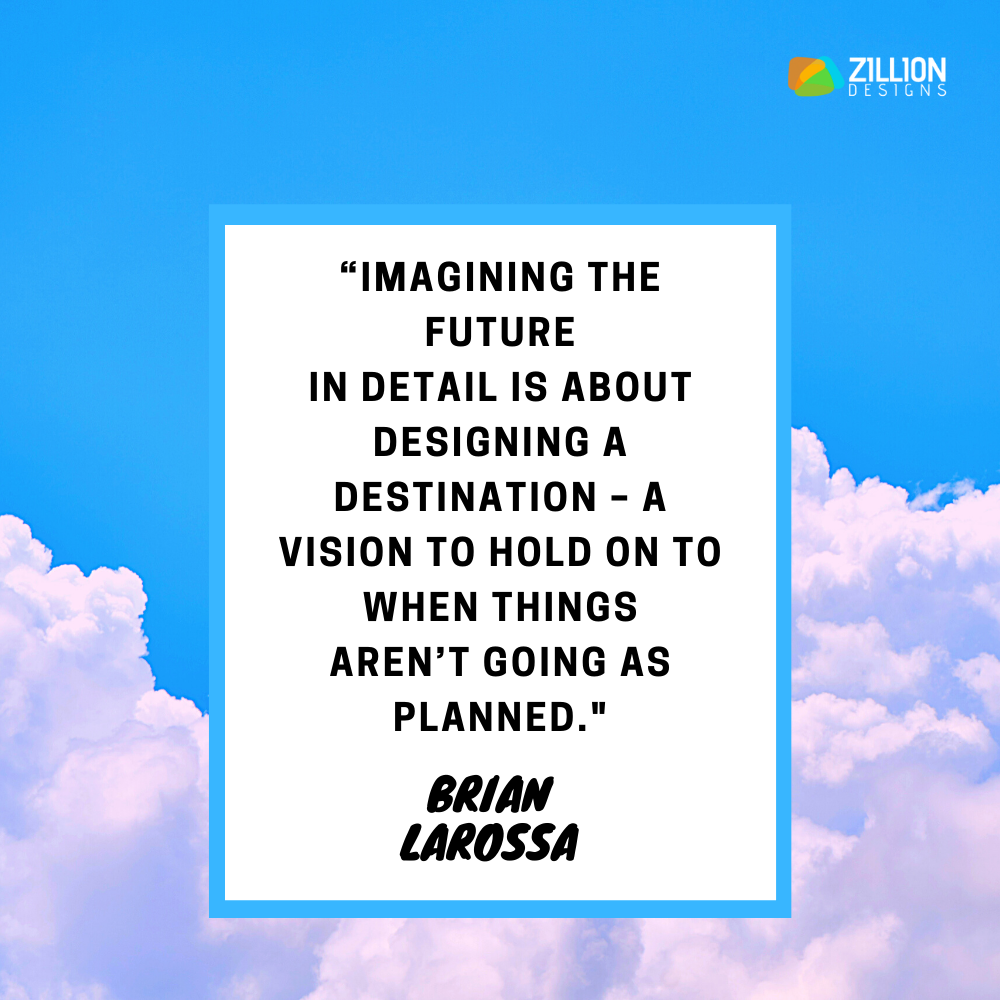
He also talked about specific thinking that leads to focused choices. In his words, “Imagining the future in detail is about designing a destination – a vision to hold on to when things aren’t going as planned. If we can muster a vision of our lives five years from now, after a vaccine has been designed, once the economy has hobbled back from the brink of collapse, if we can picture it, maybe that image will give us the resilience we will need to endure all the hardship that lies ahead.”
10. Post-Pandemic Preps
The times right now may be uncertain but one thing is for sure. This pandemic will eventually end, lockdowns will completely lift, and we’ll return to our world. It’ll be different than we left it last, but people, including designers, are already thinking of ways of how to create a new normal and acclimate ourselves to a world where some form of social distancing may still prevail and where finding work in our chosen fields may not come easy.
But all is not so dark.
With more and more businesses realizing that with remote access, work is possible and in some cases more productive and of better-quality, WFH may soon become the new normal for many graphic designers. In the future, as things ease down, we may see an influx of design agencies with their larger portions of teams working remotely or even individual designers who may have seen the perks of working in their PJs and decide they are better off freelancing.
Twitter has also recently announced that it will allow its employees to work from home ‘forever’ if their nature of jobs allows. Keeping all this in mind, we better prep ourselves for the world out there that is slowly opening up again. As we said, it may not what we had left behind, but in many cases, it can be better.
Summing Up
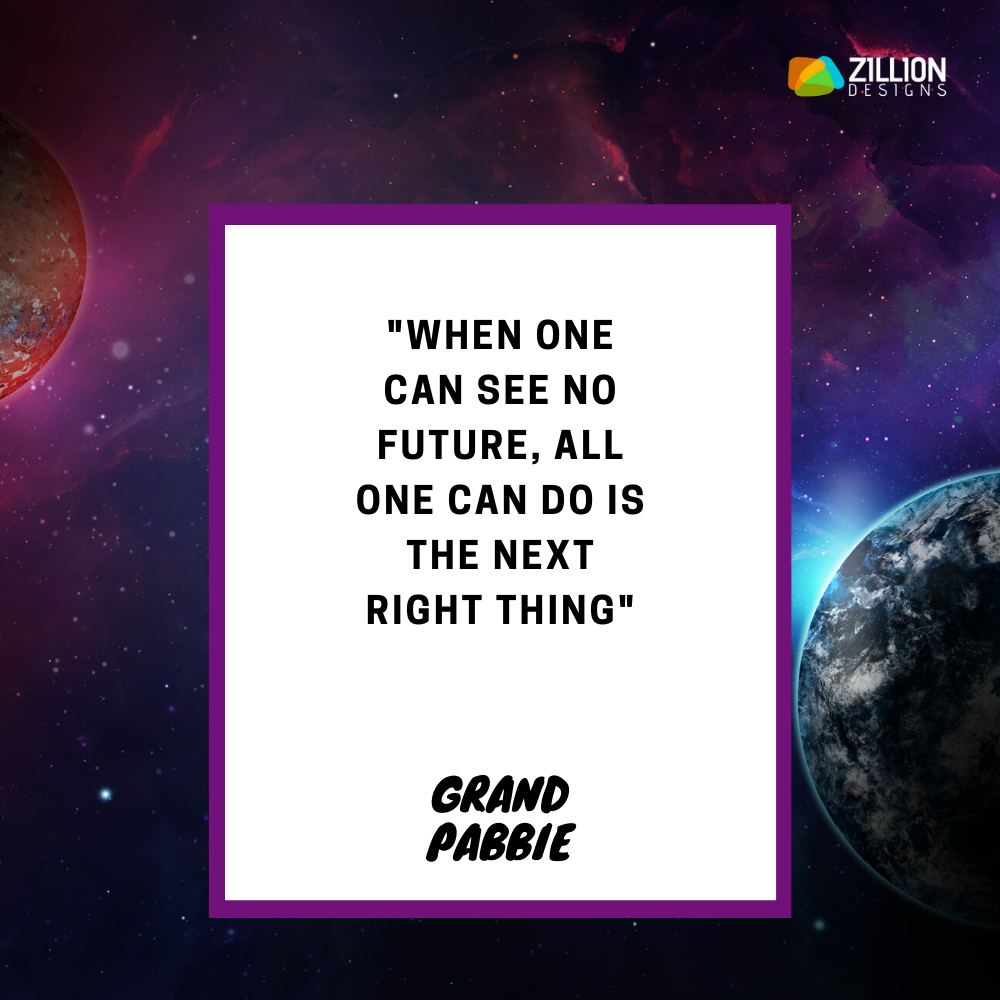
Let me conclude the discussion by what a very wise troll Grand Pabbie says to Anna in the latest installment of Disney’s Frozen franchise: ‘When one can see no future, all one can do is the next right thing’.
Here’s to doing the next right thing and not let the pandemic get the best of us.


